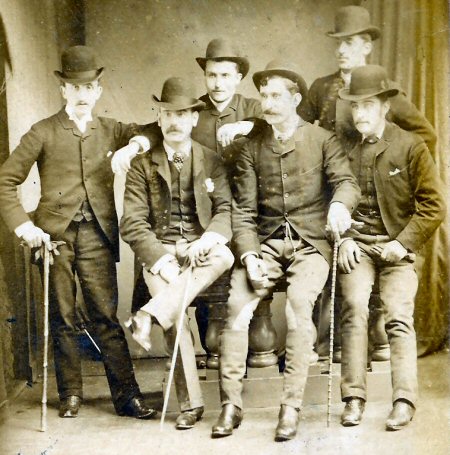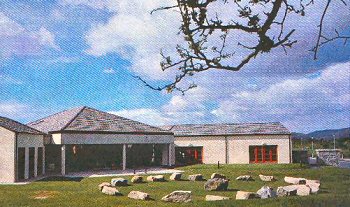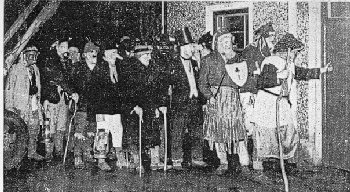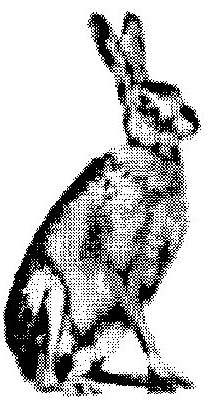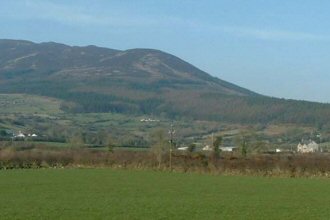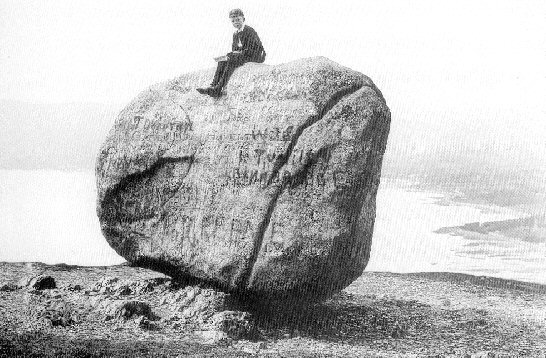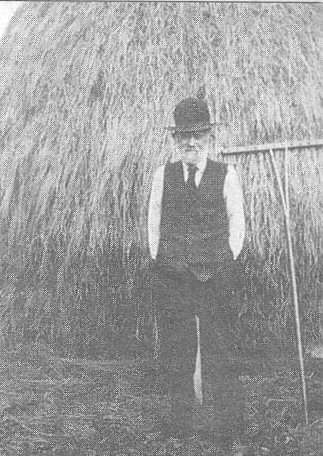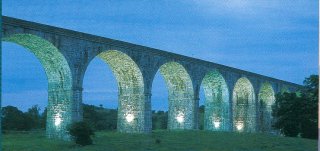The Mummers were frequently accompanied by a few young men dressed in women’s clothes who gave an exhibition dance towards the end of the performance. This was often the most enjoyable event. Aware of how ludicrous they looked in corsets and petticoats, and much-befrilled and well-starched giant-sized white knickers, they lepped, kicked, danced and besported themselves to riotous music and song.
The Rhymers were popular with all creeds and classes and increased their popularity and topicality with personal and political verses. There were ballads too concerned with love affairs of the district and peculiarities of individuals of the immediate neighbourhood.
There were versions in different neighbourhoods. This is just one.
Master of Cermonies:
Room, room, brave gallant boys
Give us room to rhyme
Till we show a bit of our activity
At this Christmas time.
Active youth and active age
The like was never acted on a stage
If ye don’t believe what I say
Enter in St George, and clear the way.
St George:
Here come I St George, from England have I sprung
And many a noble deed of valour have I done
For years I was in close quarters kept
And out of that into a prison leapt
And out of that into a block of stone
Where I made many a sad and grievous moan
Many a giant did I subdue
And I ran the fiery dragon through and through
I fought them all courageously
Until I earned the victory
Show me the man that dare me stand
And I’ll cut him down with my courageous hand.
Turk:
I’m the man that dare ye challenge
Though your courage be so great
With my sword I make all to shake
Even dukes and earls to quake.
St George:
Who are you but a poor silly lad?
Turk:
I am a Turkish champion
From Turkey land I came
To fight you, the great St George be name
And I say, by George, you are a liar, Sir!
So draw your sword and try, Sir!
St George and the Turkish champion engage in sword play. The Turk falls and his mother enters weeping and wailing..
Turk’s mother:
St George! St George! Oh, what have you done?
You have killed me only son.
See him lying bleeding there
Oh, my heart is sinking in despair.
A doctor, a doctor, ten pounds for a doctor!
Is there ne’er a doctor to be found?
Who can cure me son of his deep and mortal wound?
Enter the Doctor.
Turk’s Mother:
Well, doctor, what is your medicine?
Doctor:
Hens’ pens and Turkish treacle
Bum-bee eggs and midges’ bacon
Stirred up with a great cat’s feather
Mixed in a mouse’s blether
And given thrice a day.
Doctor attends to the Turk. He sits and gives thanks.
Turk:
Once I was dead but now I’m alive
God bless the wee doctor that made me revive.
And if you don’t believe in the words I say
Enter in Sir Oliver Cromwell
And he will clear the way.
More….
